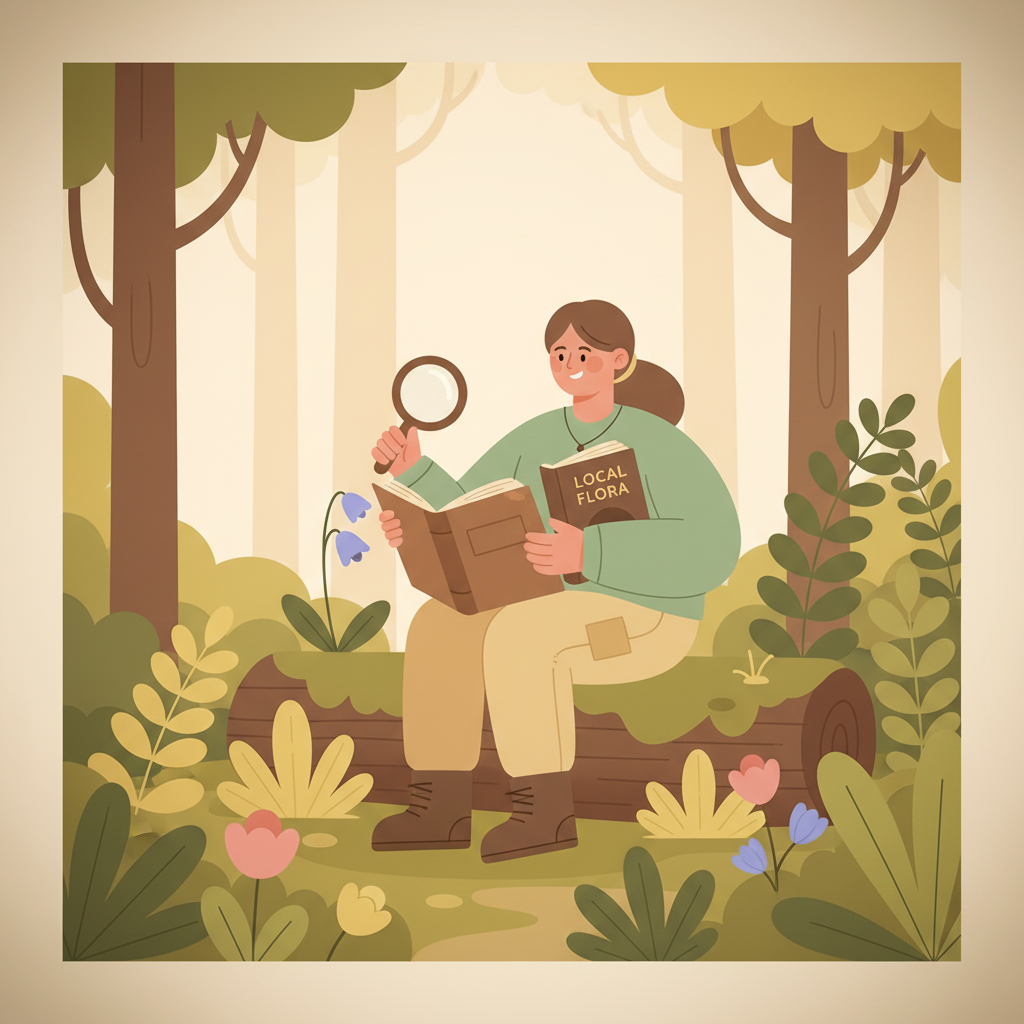Have you ever wandered through a forest or park and felt overwhelmed by the sea of green, unsure how to tell one plant from another? For nature guides, being able to identify local plants quickly and accurately is key to sharing the wonders of nature with others.
The good news is that developing this skill does not require years of study or complicated techniques. By integrating simple daily habits focused on observation and learning, you can steadily build your plant identification abilities.
In this article, you will discover three straightforward daily habits that nature guides can adopt to confidently identify local plants. These habits are easy to implement and will grow your knowledge organically over time.
Your 3 Daily Habits to Identify Local Plants Effectively
Habit 1 — Use a Reliable Field Guide Each Day
Why: A good field guide acts like a friendly name tag for plants, helping you learn and recall plant names and features which is essential to identify local plants.
How: Choose a respected guidebook for your region, like Peterson Field Guides or Newcomb’s Wildflower Guide. Each day, focus on learning the details of just one or two new plants from the guide. Pay attention to features like leaf shape, flower type, and growth habit.
Cue: Keep your guidebook accessible by your door or in your day pack to prompt daily review during your nature walks or study time.
Habit 2 — Practice Daily Nature Observations
Why: Identifying local plants requires sharp observation skills to notice differences in leaves, flowers, and stems.
How: Spend at least 10–15 minutes outside observing plants closely, noting leaf edges, flower symmetry, plant height, and textures. Use your senses fully: touch leaves, smell flowers, and watch growth patterns.
Cue: Use a reminder or alarm on your phone during a regular time such as morning or early evening to prompt your daily observation session.
Habit 3 — Keep a Nature Journal
Why: Documenting your plant encounters helps reinforce learning and serves as a personalized reference to identify local plants later.
How: Write down the plant’s identifying traits, location, and date. Add sketches or photos of leaves, flowers, and seed pods taken with your phone. Review your past entries weekly.
Cue: Carry a small notebook or use a notes app dedicated solely to your plant journal to build a consistent record of your learning.
Week 1 Schedule
| Day | Activity | Duration |
|---|---|---|
| Monday | Use field guide to learn two new plants | 15 minutes |
| Tuesday | Observe and touch leaves and flowers outdoors | 10 minutes |
| Wednesday | Record observations and sketches in nature journal | 15 minutes |
| Thursday | Revisit learned plants; quiz yourself using guide | 15 minutes |
| Friday | Practice observation focusing on flower symmetry and scent | 10 minutes |
| Saturday | Use journal to review past notes and photos | 20 minutes |
| Sunday | Take a nature walk applying all three habits | 30 minutes |
Troubleshooting
Barrier: Overwhelmed by the number of plants and difficulty remembering details.
Fix: Focus on learning just one or two plants daily using your field guide to keep the process manageable while building your ability to identify local plants.
Barrier: Forgetting to practice observations regularly.
Fix: Set daily reminders and link nature observations to existing routines like morning coffee or evening walks to make it easier to maintain habits.
Barrier: Not sure what details are important to note in your nature journal.
Fix: Use guided questions such as leaf shape, flower type, texture, and location to structure your notes and improve accuracy in identifying local plants.
FAQs
Q: How long will it take to become confident at identifying local plants?
A: With daily habits, you can notice improvement within weeks. Consistency is key to identify local plants faster over time.
Q: Are field guides necessary or can I use apps instead?
A: Field guides offer reliable, curated information essential for learning basics. Apps complement this but sometimes lack depth or can misidentify plants.
Q: What if I find plants not in my field guide?
A: Take photos and detailed notes, then research online, ask local experts, or add these finds to your journal for future identification.
Tracking & Motivation Tips
Keeping track of your progress in identifying local plants with a nature journal or a digital app helps motivate you by showing growth. Celebrate small wins by revisiting plants you previously struggled to recognize. Sharing your discoveries with fellow nature guides or friends can boost commitment and make the learning process enjoyable.
Key Takeaways to Identify Local Plants With Daily Habits
Daily habits to identify local plants center around consistent use of field guides, focused nature observations, and maintaining a journal. These habits create a self-reinforcing learning cycle that builds your plant knowledge and observation skills over time. Even a few minutes a day can make a big difference in your ability to recognize and appreciate the local flora.




